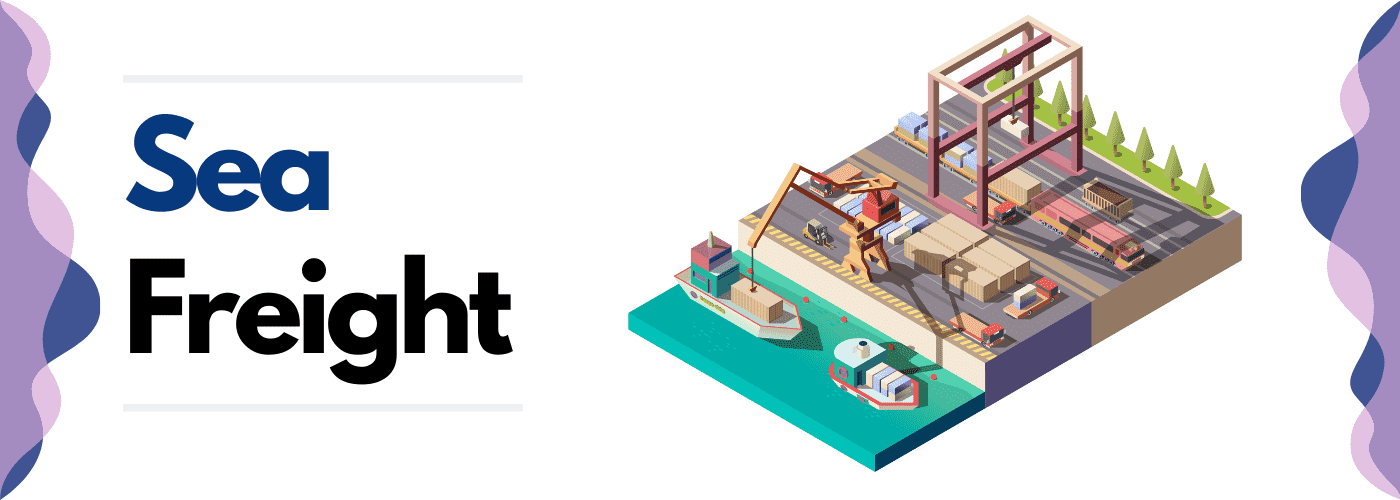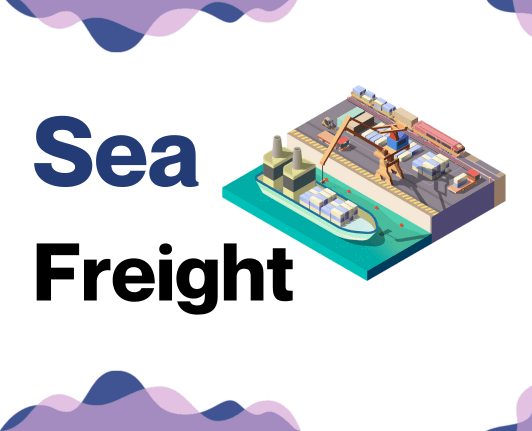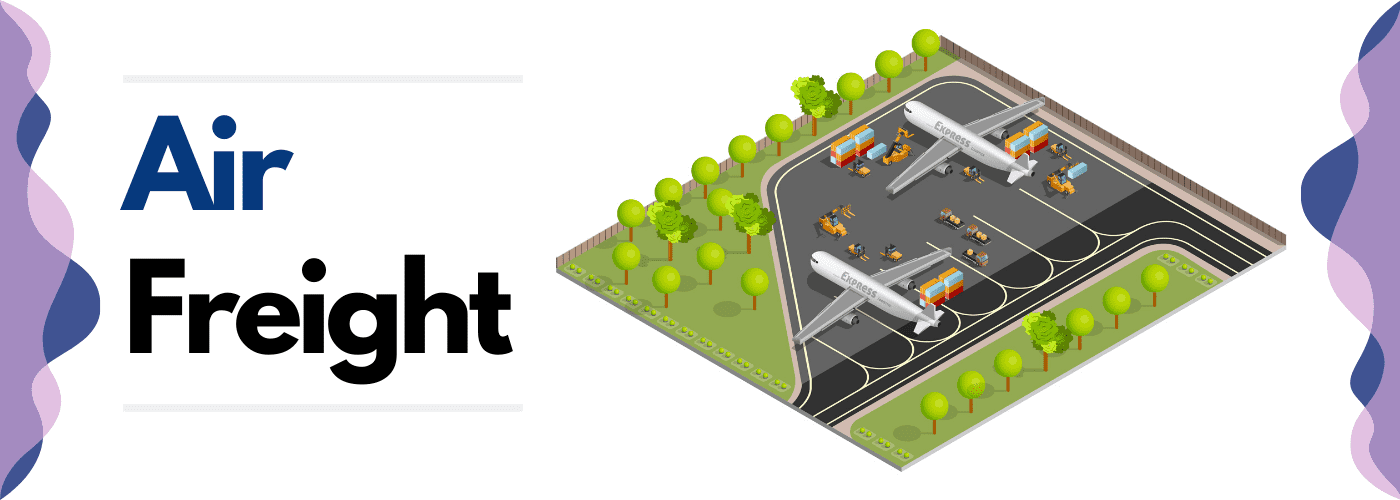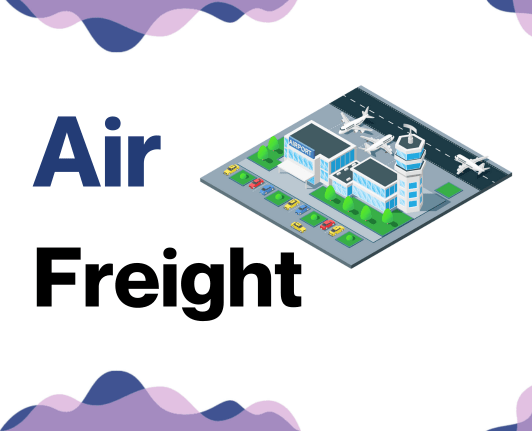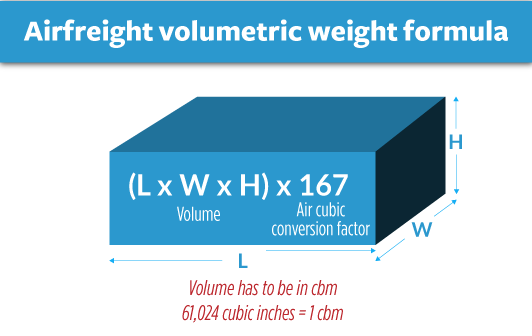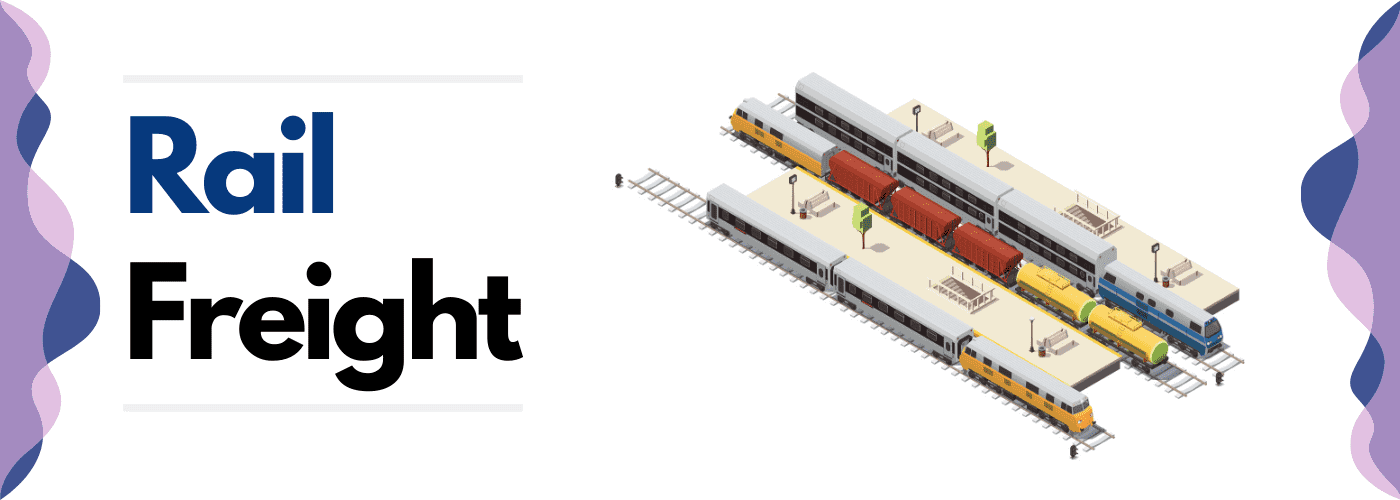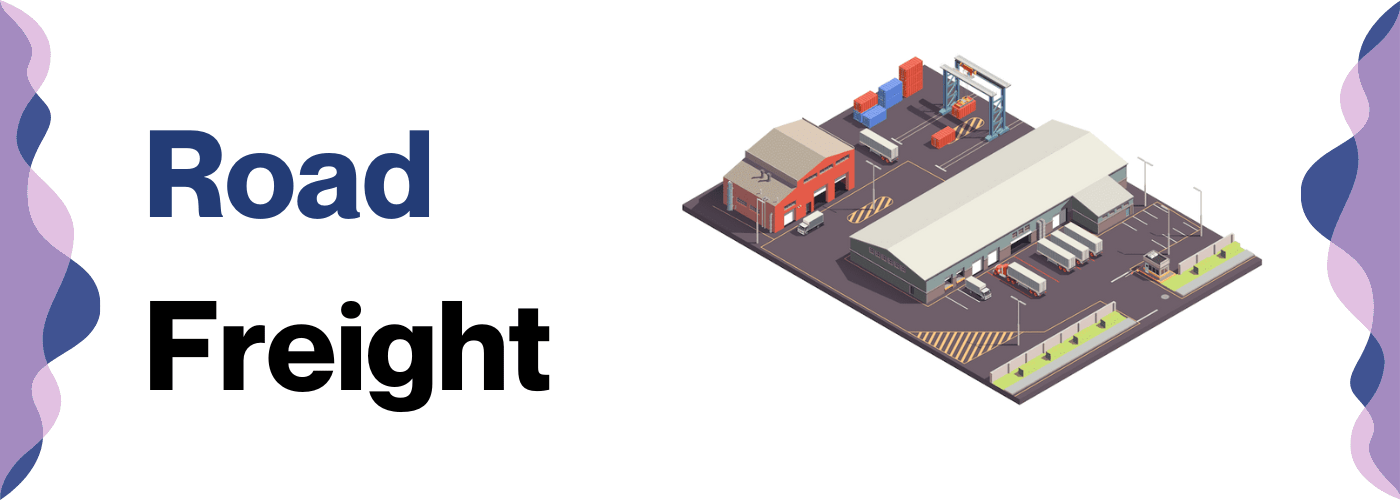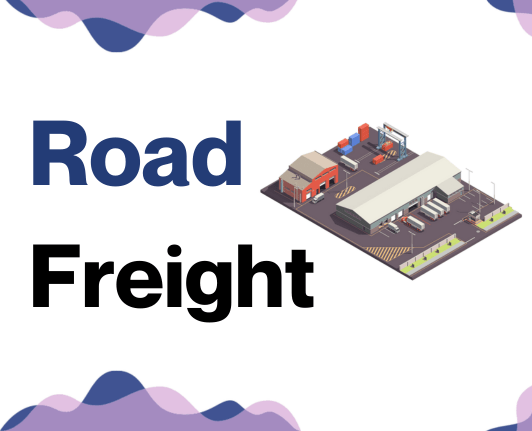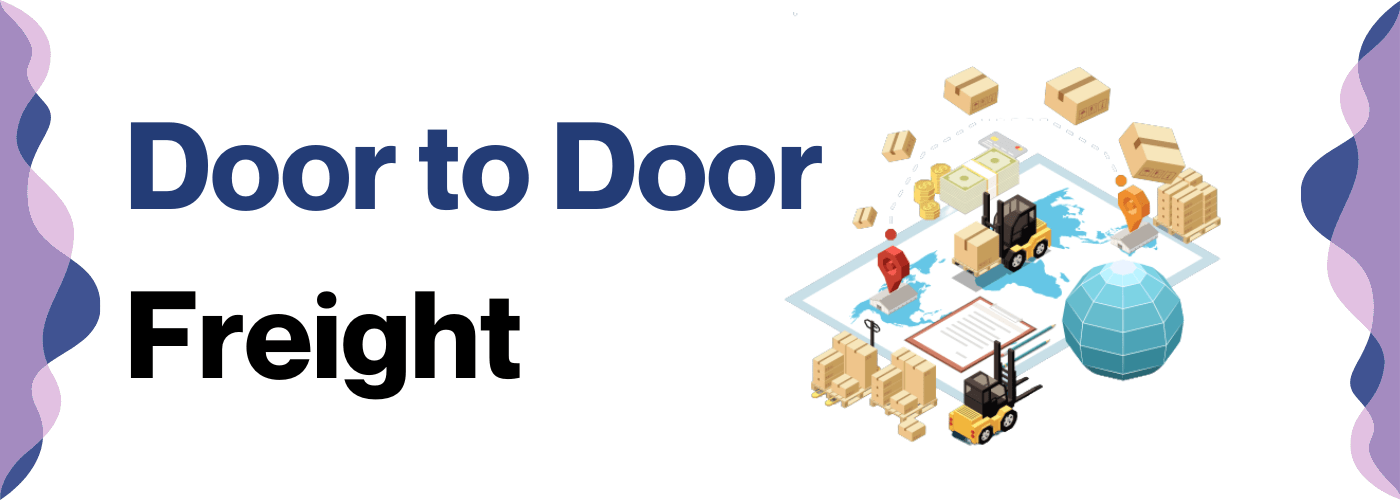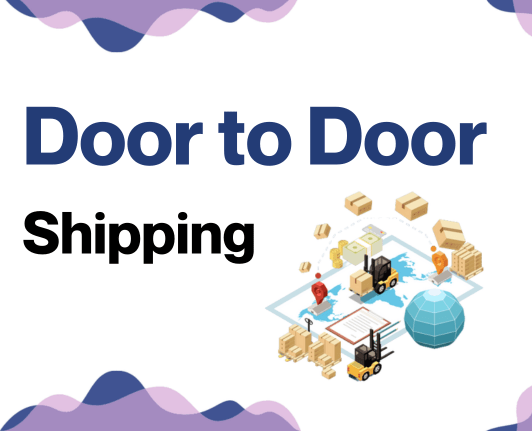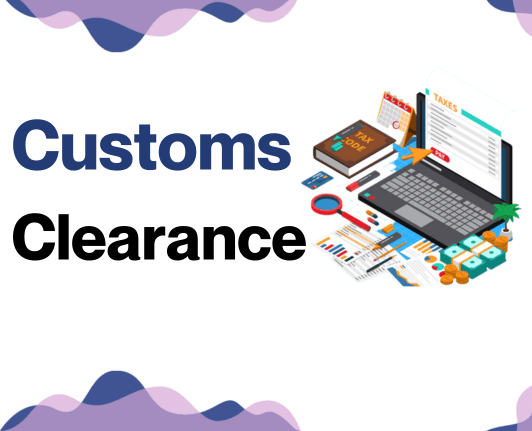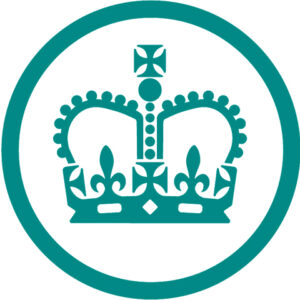Why did the box go to school? Because it wanted to get shipped out smarter! Now, if understanding freight transport rates, transit times, and navigating through complex customs regulations between UK and Romania is causing you to pull your hair out, we promise you're not alone.
This guide is tailored with you in mind, breaking down the ins and outs of air, sea, road, and rail freight, clarifying the murky waters of customs clearance, duties, and taxes. Not only that, but we also include tips and advice specially curated for businesses to make your freight forwarding journey smoother.
If the process still feels overwhelming, let DocShipper handle it for you! As an international freight forwarder, we thrive on turning your challenges into success, managing every step of your shipping process from start to finish.
Table of Contents
Which are the different modes of transportation between UK and Romania?
Picking the ideal transport for shipping goods from the UK to Romania isn't as simple as choosing the fastest train or biggest plane. Just like picking the perfect bicycle for a bumpy or smooth terrain, it's a game of checking maps and weighing options.
It's almost 2,000 miles between them – a huge space to span. Besides, there's a whole continent to cross! Europe's fill of international borders can limit some choices. Yet, whether it's by air, road, rail, or sea, getting your deliveries from London to Bucharest can be a smooth ride with the right method tailored to your unique shipping needs.
How can DocShipper help?
Looking to ship cargo from the UK to Romania? Seamless logistics is our forte at DocShipper. We handle everything from transport organization, customs procedure, to administrative paperwork. Why hurdle through the complexities alone? Ring our consultants for a free consultation or request a comprehensive estimate within just 24 hours!
DocShipper Tip: Ocean freight might be the best solution for you if:
- You're dealing with large quantities or oversized items. Sea freight offers a budget-friendly way to maximize space, a particularly useful option given the UK's extensive port network.
- Your shipment isn't on a tight schedule. Ocean transport typically takes longer than air or rail, but it offers reliability.
- Your supply chain involves key ports, allowing you to take advantage of a wide-reaching network of sea lanes.
Sea freight between UK and Romania
It's like a precisely choreographed dance, arranging cargo transport from the UK to Romania via ocean routes. The teeming ports of Felixstowe and London Gateway in the UK connect with the bustling Constanta Port in Romania, forming a vital conduit for high-volume trade.
But it's not without its dips and spins - several businesses still stumble over the intricacies of ocean shipping, slipping up on documentation or grappling with logistics pitfalls.
Sea freight is a gentleman courting patience - it may lack in speed but woos with cost-effectiveness, especially for bulk shipments. But smooth sailing in this trade dance isn't guaranteed. Understanding specific procedures, seizing best practices, and avoiding common mistakes along this UK-Romania passage can turn a worrisome waltz into a perfect pirouette.
This section is your tutor to that seamless performance, unravelling the complexities of the maritime shipping landscape. A sharper understanding of this intricate dance steps opens up the dance floor - bringing ease, efficiency, and cost-effectiveness to your shipping experience.
Main shipping ports in UK
Port of London
Location and Volume: Located on the River Thames, this port is fundamental for UK's trade as it is the second largest in the country, with a shipping volume of 53 million tonnes annually.
Key Trading Partners and Strategic Importance: The port has extensive connections with Europe, Asia, and the Americas. It's recognized for handling every type of cargo, including containers, bulk goods, and oil.
Context for Businesses: If you're planning to expand to Europe, Asia, or America, the Port of London, due to its strategic location and capability of handling diverse types of cargo, could work as a key element in your logistics strategy.
Port of Liverpool
Location and Volume: Occupying the Western coast of the country, this port is responsible for more than 32 million tonnes of cargo annually.
Key Trading Partners and Strategic Importance: The port maintains strong ties with America, Asia, and other European countries. It is well-known for its large and sophisticated container terminal.
Context for Businesses: If your business requires diverse connections and heavy container shipping, the Port of Liverpool could be the perfect fit, considering its world-class container terminal and wide range of connections.
Port of Southampton
Location and Volume: Located on the South Coast, this port handles over 40 million tonnes of cargo annually.
Key Trading Partners and Strategic Importance: It sustains partnerships primarily with Europe, North America, and the Far East. Importantly, it's the UK’s leading port for automotive trade.
Context for Businesses: For companies within the automotive sector intending to penetrate European, American, or Far Eastern markets, the Port of Southampton could be an important enabler, due to its advanced automotive handling facilities.
Port of Dover
Location and Volume: Based in the Southeastern part of the UK, this port manages upwards of 5.4 million TEU annually.
Key Trading Partners and Strategic Importance: Vital to the UK-EU trade corridor, it maintains strong connections with France and Belgium. It is renowned for handling roll-on/roll-off traffic.
Context for Businesses: If you're planning to expand to reach France or Belgium, or simply create synergies in the area.
Main shipping ports in Romania
Port of Constanta
Location and Volume: Situated on the western coast of the Black Sea, the Port of Constanta stands as a cornerstone of European trade, boasting a remarkable shipping volume of approximately 75.5 million tons in 2022. This bustling maritime hub plays a crucial role in connecting Europe to the world, serving as a gateway for a diverse array of goods and fostering economic growth across the continent.
Key Trading Partners and Strategic Importance: Although trade is diverse, key partners include Germany, Hungary, Austria, and Switzerland. This port is Romania's maritime gateway and has the largest terminal of its kind in the Black Sea and Eastern Mediterranean zones.
Context for Businesses: If you're seeking a port with extensive inland connections, the Port of Constanta could be a valuable asset in your shipping strategy. Its impressive network of road, rail, and river links connects Central and Eastern Europe, making sustainable distribution possible.
Mangalia Port
Location and Volume: Nestled along the Black Sea coast south of Constanta, Mangalia Port holds the distinction of being Romania's southernmost maritime port. While its primary focus lies in facilitating passenger and tourism traffic, it also plays a supportive role in the local economy, handling a modest volume of goods. In 2022, the port handled an estimated 20,000 TEUs, reflecting its growing importance in the region's maritime landscape.
Key Trading Partners and Strategic Importance: Most shipments from Mangalia are domestic or within the Black Sea region. It hosts important ship repair yards and yacht marinas supporting the domestic market.
Context for Businesses: If you operate in the tourism sector or require ship repair services, Mangalia Port should be on your radar. While not a heavy-hitter for cargo, its specialized services and location might align closely with your logistics needs.
Port of Galati
Location and Volume: Strategically positioned in eastern Romania along the meandering Danube River, the Port of Galati holds the distinction of being the largest river port in the country. With a bustling cargo throughput of approximately 19 million tons in 2019, the port plays a pivotal role in facilitating the movement of goods, predominantly bulk materials, across the region. In 2022, the port is projected to handle an estimated 50,000 TEUs, reflecting its expanding role in containerized cargo transportation.
Key Trading Partners and Strategic Importance: Key trading partners are primarily EU countries. A significant proportion of imports and exports are metal and steel goods, agricultural produce, and minerals.
Context for Businesses: If your trading focus lies within the European Union or your goods are heavy, bulky consignments, consider the Port of Galati. With its strategic position and capabilities in handling heavy goods, it could be a fitting choice for your logistics strategy.
Port of Tulcea
Location and Volume: Situated in the northeastern corner of Romania, the Port of Tulcea stands as a vital link along the strategically important Danube River. While its cargo volume may not rival that of Galati, it continues to play a crucial role in facilitating the movement of goods to and from Central Europe, handling an estimated around 70,000 TEUs in 2022. Its strategic location and growing infrastructure make it a promising hub for future trade expansion.
Key Trading Partners and Strategic Importance: Tulcea mainly services the European market and is a big player in routing goods through the wider Danube River network.
Context for Businesses: If you're considering river shipping as a cost-effective means of transporting goods into Central Europe, the Port of Tulcea could be a valuable stop.
Port of Braila
Location and Volume: Strategically positioned on the Danube River approximately 20 nautical miles from Galati, the Port of Braila plays a crucial role in supporting local commerce, despite its total shipping volume being lower compared to other ports. In 2022, the port handled an estimated 3 million tonnes, reflecting its significance in facilitating the movement of goods and contributing to the region's economic growth.
Key Trading Partners and Strategic Importance: Braila's principal trading partners are within the EU, similar to Galati and Tulcea.
Context for Businesses: The Port of Braila could be a good consideration for smaller scale businesses aiming for seamless logistics solutions within the European Union.
Port of Sulina
Location and Volume: Situated at the confluence of the Sulina Arm of the Danube River and the Black Sea, the Port of Sulina serves primarily as a gateway for tourism and passenger traffic. While its cargo handling activities are relatively limited, it remains an essential component of the region's maritime infrastructure, handling an estimated 15,000 TEUs in 2021.
Key Trading Partners and Strategic Importance: Trading is largely domestic or within the Black Sea region. The port provides unique opportunities for ship repair and marine leisure activity businesses.
Context for Businesses: Although the Port of Sulina has less significance in large-scale cargo handling, it could prove beneficial for businesses in the tourism or marine leisure sectors.
Should I choose FCL or LCL when shipping between UK and Romania?
Choosing the right mode of sea freight, be it Full Container Load (FCL) or Less than Container Load (LCL), is a key part of shipping goods from the UK to Romania. Your decision directly affects cost, delivery speed, and the overall smoothness of your transport process.
This section will arm you with the knowledge to differentiate between these two shipping options and select the one that aligns best with your individual cargo requirements. Remember, an informed choice can be the difference between success and needless stress. Let's dive into the details.
LCL: Less than Container Load
Definition: LCL, or Less than Container Load, is a method of shipment where multiple smaller consignments are consolidated into a full container load (FCL). An LCL shipment typically shares container space with other goods, making it ideal for lower volume shipments.
When to Use: Use LCL when your cargo is less than 13-15 cubic meters (CBM). It's all about cost and flexibility. When you have a low volume shipment, LCL is attrative as you'll be paying for only the space that your cargo occupies, not the whole container.
Example: Suppose you're a small business in the UK looking to ship a light shipment of handmade furniture to Romania. Your cargo might be around 10 CBM which is significantly less than a 20-foot container capacity (33 CBM). Instead of wasting money on unused space, you would go for an LCL shipment, freeing up resources to invest in other parts of your business.
Cost Implications: LCL has the potential to be far more cost-effective for less than full-load cargos. However, keep in mind that your cargo will be handled multiple times, which can increase the risk of damage and delays. Moreover, since the cost of LCL is calculated based on weight/volume, more dense or heavy goods may lead to higher LCL freight costs. Be sure to consider these factors before making your choice.
FCL: Full Container Load
Definition: FCL, or Full Container Load, refers to sole use of a 20'ft or 40'ft container for your goods in freight forwarding. It is a standard form of shipping for FCL shipping where your consignment is safe and secure as it remains sealed from the point of origin to its destination.
When to Use: FCL shipping is most cost-effective for a cargo volume of greater than 13/14/15 cubic meters. Its simplicity and high volume capacity make it a preferred choice for larger shipments.
Example: For instance, a construction equipment manufacturer shipping large machinery from UK to Romania would most likely benefit from an FCL container, due to the bulky nature of their goods and the advantage of the safety seal.
Cost Implications: With FCL shipping, you are paying for the entire container space, regardless of how much you fill it. Receiving an FCL shipping quote ensures you are aware of the fixed cost up-front. However, despite the higher initial price compared to LCL, the FCL rate lower when calculated per unit of cargo, making it cheaper for large consignments.
Unlock hassle-free shipping
Choosing between consolidation and a full container for shipping from the UK to Romania? It's a challenge, but DocShipper is here to ensure the process is hassle-free. Our ocean freight specialists guide you, considering critical factors like the volume of goods, costs, and delivery timelines. Ship smart with our end-to-end forwarding solutions! For professional advice tailored to your business and a free estimation, get in touch today. Your ease in international shipping is our priority.
How long does sea freight take between UK and Romania?
Shipping goods from the UK to Romania via sea freight typically takes around 12-18 days, though the exact timing can vary. Your transit time might be influenced by several factors including the specific ports utilized, the type of cargo, and the goods' weight. For the most accurate and tailored quote, it's best to get in touch with a reliable freight forwarder like DocShipper.
Below is a general idea of the average transit times in days for sea freight between the main freight ports in the UK and Romania. Keep in mind that these are estimations and that actual transit times can vary:
| UK port | Romania Port | Average transit time (days) |
| London | Constanta | 33 |
| London | Mangalia | 33 |
| London | Galati | 33 |
| London | Tulcea | 33 |
**Since Romania only has one main freight port, all UK shipments via ocean freight will arrive there. For specific timings or if your destination falls outside these major ports, reach out for a customized quote. These rates will also vary because of a variety of factors, always check before picking one of the ports described here.
How much does it cost to ship a container between UK and Romania?
Understanding ocean freight rates can sometimes feel like decoding a complex puzzle. Shipping a container from the UK to Romania? Costs can broadly range per CBM, given the influence of elements like Point of Loading, Destination, the carrier, the goods nature and even monthly market fluctuations.
These aspects make pinpointing an exact shipping cost challenging. But here's the good news: our seasoned shipping specialists thrive on these challenges! They'll guide you throughout your shipping journey, ensuring you get the best rates crafted for your unique scenario. Our mantra? We quote not by generalities, but by specific case-by-case situations. So, rest assured, you're in expert hands.
Special transportation services
Out of Gauge (OOG) Container
Definition: Out of Gauge (OOG) containers are special shipping containers designed to carry oversized items. Any cargo that is taller, wider, or longer than a standard shipping container is referred to as 'Out of gauge cargo.'
Suitable for: They are suited for large equipment, machinery, or goods that won't fit into a standard shipping container.
Examples: This can include large machinery components, yachts, tractors, and pre-fabricated units.
Why it might be the best choice for you: If your business needs to transport overly large or heavy items between the UK and Romania, the OOG container could be your solution.
Break Bulk
Definition: Break Bulk refers to goods that have been broken down into units before being loaded onto the vessel. These items are typically loaded individually, not in containers.
Suitable for: Break bulk is used for items that are too big or heavy to fit into a container but can be handled individually or in batches.
Examples: These types of loads often include things like timber, paper pulp, steel beams, or machinery parts.
Why it might be the best choice for you: If you’re dealing with moderately large items that can be managed individually, break bulk could be the right option to meet your needs.
Dry Bulk
Definition: Dry Bulk refers to loose cargo loads which are loaded directly into the vessel’s hold rather than being transported in containers.
Suitable for: Dry bulk is commonly used for commodities that can be poured directly into the ship’s hold, such as grain, coal, or aggregates.
Examples: Grains, coal, or cement are prime examples of dry bulk goods.
Why it might be the best choice for you: If your business deals in raw, granular products and requires large capacity shipments between the UK and Romania, Dry Bulk could be your ideal shipping method.
Roll-on/Roll-off (Ro-Ro)
Definition: Roll-on/Roll-off (Ro-Ro) shipping involves vessels designed to carry wheeled cargo, such as cars, trucks, semi-trailer trucks, trailers, and railroad cars, which are driven on and off the ship on their own wheels or using a platform vehicle.
Suitable for: This is the optimal method for businesses shipping cars, trucks, trailers, or anything else on wheels.
Examples: This method is most commonly used for new and used cars, but also boats, trucks, and even railway wagons.
Why it might be the best choice for you: If your business specialises in the transportation of wheeled vehicles and equipment between the UK and Romania, the ro-ro vessel is likely your best option.
Reefer Containers
Definition: Reefer Containers are refrigerated shipping containers, designed to transport temperature-controlled cargoes such as fruits, meat, fish, seafood, vegetables, dairy, and also non-food products.
Suitable for: Businesses that need to transport perishable goods under regulated temperatures.
Examples: Most commonly used for food items like fruit, meat, and dairy products, and also for some pharmaceuticals.
Why it might be the best choice for you: If your business needs to deliver perishable goods in a controlled temperature environment between the UK and Romania, a reefer container may be essential for your supply chain.
At DocShipper, we understand the complexities of freight forwarding and make it our mission to give businesses like yours peace of mind while shipping goods between the UK and Romania. Whether you’re dealing in oversized machinery or perishable products, we have the resources and the expertise to ensure your cargo reaches its destination safely and swiftly. For a personalized solution, don’t hesitate to reach out to us for a free shipping quote in less than 24 hours.
DocShipper Tip: Air freight might be the best solution for you if:
- You're facing tight deadlines or need rapid delivery. Air freight is your quickest option, which aligns well with the fast-paced business environment.
- Your shipment is relatively small, under 2 CBM. Air freight is ideal for these more compact loads.
- Your cargo's destination isn't easily reached via sea or rail. This makes air freight a viable option, especially given the extensive network of airports available.
Air freight between UK and Romania
Fast, reliable, with the capacity to handle small yet high-value cargoes, air freight becomes an essential part of the chain linking the UK and Romania. Visualize moving a crate of the latest electronics, high-tech medical equipment or even premium fashion wear – all will reach faster and safer via air.
But, here's the twist. Many falter on the journey, getting tangled in a web of intricate pricing calculations or inefficient practices, inadvertently inflating costs. Consider shipping by air, it's not as simple as plugging numbers into a formula.
The wrong weight could lead to a miscalculation, wasting precious revenue. Understanding the game’s finer rules can mean the difference between thriving or merely surviving. As we go on, we’ll decode these tricks of the trade. Don't fret, we've got you!
Air Cargo vs Express Air Freight: How should I ship?
Choosing between air cargo and express air freight for shipping from the UK to Romania hinges on your specific needs. Think of it this way: it's like deciding whether to share a commercial flight (that's your air cargo) or charter your own plane straight to the destination (that's express air freight). Balancing speed, cost, and capacity will be the key to your perfect shipping solution.
Should I choose Air Cargo between UK and Romania?
If your cargo weight exceeds 100-150 kg (220-330 lbs), air cargo is an appealing option between the UK and Romania. It's cost-effective and reliable, catering to budget constraints while ensuring cargo safety. Airlines such as British Airways and Tarom are key players in this mode of transport.
However, longer transit times could be a minor setback due to their fixed schedules. Weigh your needs and decide if this route aligns with your business requirements.
Should I choose Express Air Freight between UK and Romania?
Express air freight, a service utilising cargo-exclusive planes, provides an expedited delivery solution. If your shipments to Romania from the UK are under 1 CBM or around 100/150 kg (220/330 lbs), this option from courier firms like FedEx, UPS, or DHL could be ideal.
These companies ensure fast, seamless delivery, proving beneficial when time is critical. Just remember, for larger volumes, alternative shipment methods may be more cost-effective. Make a choice based on your specific needs and priorities.
Main international airports in UK
Heathrow Airport
Cargo Volume: Heathrow is the UK's busiest cargo airport, handling over 1.2 million metric tonnes of cargo per year.
Key Trading Partners: The US, China, India, Japan, and Australia are among Heathrow's top trading partners.
Strategic Importance: Situated in London, it serves as a major hub for transatlantic flights and connects to over 180 destinations worldwide.
Notable Features: Offers state-of-the-art facilities for cargo handling with dedicated areas for perishable items, dangerous goods, and valuable cargo.
For Your Business: High volume and frequent shipping routes could make Heathrow an optimal choice for businesses needing fast and regular connections to global markets.
Gatwick Airport
Cargo Volume: Gatwick handles about 96,000 tonnes of cargo each year.
Key Trading Partners: Major trading partners include European and North American countries.
Strategic Importance: Being the second largest airport in the UK, Gatwick is a business-friendly gateway to the European market.
Notable Features: Known for its efficiency, Gatwick boasts advanced cargo handling facilities including temperature-controlled storage.
For Your Business: If your business frequently ships to Europe or North America, Gatwick's extensive network could make it a cost-efficient option.
Manchester Airport
Cargo Volume: Manchester Airport, the third busiest in the UK, handles nearly 120,000 tonnes of import and export freight annually.
Key Trading Partners: Key trading partners are North America and the Middle East, along with some European countries.
Strategic Importance: Located in the heart of the UK, it provides valuable connectivity to Northern England in addition to its international routes.
Notable Features: It offers comprehensive cargo handling services including express parcel handling and animal transportation services.
For Your Business: If your business is located in the North of the UK, Manchester Airport might be an excellent choice to leverage regional logistics alongside satisfying your global shipping needs.
Stansted Airport
Cargo Volume: Home to one of the largest cargo terminals in the UK, Stansted handles around 250,000 tonnes of cargo per year.
Key Trading Partners: Primarily European countries and the Middle East.
Strategic Importance: It serves as FedEx's and UPS's main UK bases, making it a significant express courier hub.
Notable Features: Boasts advanced security systems and areas dedicated to specific types of cargo, ensuring efficient and secure transit of goods.
For Your Business: With its excellent courier and small package services, Stansted could be an ideal choice if fast, door-to-door delivery underpins your business model.
East Midlands Airport
Cargo Volume: An important cargo hub, East Midlands Airport handles over 360,000 tonnes of flown cargo annually.
Key Trading Partners: Primarily serves EU destinations, with some routes to North America and Asia.
Strategic Importance: It's labeled as the UK's most important pure cargo airport, tending to specialize in express and postal services.
Notable Features: Runs around the clock and hits peak operation during the night, facilitating timely distribution.
For Your Business: If your business involves time-sensitive goods or you require overnight services, East Midlands Airport's 24-hour operation makes it a worthy option.
Main international airports in Romania
Henri Coandă International Airport
Cargo Volume: Over 150,000 tonnes of cargo annually, making it the busiest in Romania.
Key Trading Partners: Primarily engages with European Union countries, especially Germany, Italy, and France.
Strategic Importance: Located in Bucharest, the capital city, it serves as the main hub for air freight transportation in Romania, connecting to over 65 destinations worldwide.
Notable Features: Utilizes state-of-the-art technology for cargo handling and storage, complete with areas designated for storing hazardous and refrigerated goods.
For Your Business: Its robust infrastructure, robust handling capabilities, and strategic location make it ideal for the transportation of a wide range of commodities. If your company frequently ships to or from Europe, this airport should be top of your consideration.
Cluj-Napoca International Airport
Cargo Volume: Handles around 15,000 tonnes of cargo annually.
Key Trading Partners: Mainly services countries within the European Union with Germany and France as leading partners.
Strategic Importance: As the second largest airport in Romania, it is a key freight hub, particularly for Northern Transylvania, and offers connections to more than 40 destinations.
Notable Features: Offers a wide range of cargo handling capabilities, including special storage facilities for perishable, valuable, and hazard categories.
For Your Business: If your business caters to the Northern Transylvania region or wishes to target European markets, this airport provides a trustworthy and strategic option.
Timisoara International Airport
Cargo Volume: Manages around 13,000 tonnes of cargo each year.
Key Trading Partners: Conducts business mainly with countries in the European Union.
Strategic Importance: Serves as a critical logistics and freight hub for Western Romania, offering regular flights to over 20 destinations.
Notable Features: The airport has recently undergone impressive expansion and modernization efforts, improving its cargo handling, storage, and processing capacities.
For Your Business: If Western Romania or the connected European markets align with your business growth strategy, take advantage of Timisoara's modernized facilities and services.
Sibiu International Airport
Cargo Volume: Handles approximately 3,600 tonnes of cargo per annum.
Key Trading Partners: Engages predominantly with European Union countries.
Strategic Importance: The airport effectively serves Central Romania and offers direct connections to more than 10 international destinations.
Notable Features: Potential for expansion and modernization to accommodate the growing demand for cargo transportation.
For Your Business: This could be an excellent opportunity for businesses looking to expand their reach to Central Romania or related European markets with potential for increasing cargo demands.
Bacau International Airport
Cargo Volume: Handles about 2,500 tonnes of cargo yearly.
Key Trading Partners: Primarily does business with countries within the European Union.
Strategic Importance: Important freight hub for Eastern Romania, with direct connections to several European destinations.
Notable Features: Compact airport with efficient cargo handling capabilities.
For Your Business: If Eastern Romania or the associated European corridors are pivotal to your freight operations, Bacau International Airport offers efficient cargo services that can facilitate your business needs.
How long does air freight take between UK and Romania?
Air freight between the UK and Romania typically has an average shipping period of 1-3 days. However, keep in mind that the actual transit time can fluctuate based on several variables. These include the specific departure and arrival airports, the weight of the cargo, and the nature of the goods being transported.
Hence, for more accurate estimates specific to your shipment, consult an expert international freight forwarder like DocShipper.
How much does it cost to ship a parcel between UK and Romania with air freight?
Air freight costs from the UK to Romania average at about £1.50-£2.50/kg, yet there's broad variation. Your final price gets detailed according to factors such as distance from departure & arrival airports, dimensions & weight of shipments, and the nature of goods.
Fear not, our seasoned team is committed to walk you through each step, tailoring a bespoke quote to your needs. Because your business is unique, we quote based on each specific case, ensuring cost-effectiveness and efficiency. So, why wait? Contact us and receive a free quote in under 24 hours.
Your international trade endeavours are our priority.
What is the difference between volumetric and gross weight?
Gross weight refers to the actual weight of a shipment, including packaging. It's measured simply on a scale in kilograms (kg).
Volumetric weight, on the other hand, takes into account the space a package occupies on an aircraft. It's the package size relative to its weight, also measured in kg.
In Air Cargo, you calculate the volumetric weight by multiplying the package dimensions (length x width x height in cm) and dividing by 6,000. For Express Air Freight services, you divide by 5,000 instead.
Let's illustrate with an example. Suppose a package weighs 20 kg and occupies a space of 40 cm x 50 cm x 60 cm. For Air Cargo, the volumetric weight is (405060)/6000, equaling 20 kg (44 lbs). In Express Air Freight, it's (405060)/5000 - that's 24 kg, or 53 lbs.
Understanding these calculations is vital for cost planning. Freight charges are not solely based on gross weight but also on volumetric weight. The shipping company will charge you based on whichever weight (gross or volumetric) is higher.
This practice is also known as 'chargeable weight'. It ensures a fair payment for the carrier, considering both the weight and space your package occupies.
DocShipper tip: Rail freight might be the best solution for you if:
- You are looking for a cost-effective transportation method for large volumes.
- Your shipping route is well-connected by rail, providing a reliable and environmentally friendly option.
- Your cargo's destination and origin are near rail terminals, minimizing the need for additional road transportation.
Rail freight between UK and Romania
Why walk when you can choo-choo your goods directly from the UK to Romania? Our rail-freight express made its first run in the 1850s, knitting regions together across Europe. A variety of commodities, from cars to cornflakes, grace this metallic trail, traversing France, Belgium, Germany, Austria, and Hungary.
Curating an unbroken narrative of economic unity between the UK and Romania, the trucking tonnage over this rail line is a testament to shared growth.
Absolutely, rail freight offers a happy medium between cost and time, compared to its sea and air siblings. However, it’s not all sappiness and sunflowers; customs procedures demand a keen-eyed vigilance and an understanding of trans-European regulations.
So, are you ready to choogle your goods in sync with the rhythm of Europe's heartland, or were you thinking of a quicker ride or a more economical route? Get ready to delve further into what's best for your shipping needs.
What are the main train stations between UK and Romania?
Doncaster Railport
Let's start with the United Kingdom. One key train station that forms an integral part of the rail freight network is the Railport in Doncaster, an important hub for rail distribution in the UK. It deals with significant cargo volumes and serves many crucial trading partners. For your business, the strategic location of Doncaster near the country's center offers quick and efficient access to both the north and south.
London Gateway Port Rail Terminal
London Gateway Port Rail Terminal, strategically located close to London, is another crucial hub in the UK. It's capable of handling high-volume freight trains and is renowned for its efficiency. Noteworthy for businesses is the terminal's ability to provide seamless connections between sea, rail, and road, which can help streamline your logistics operations.
Curtici Arad
In Romania, Curtici Arad is key to facilitating rail trade, especially on the western frontier. This station deals with substantial cargo volumes and is known for its seamless movement of goods across national borders. Its strategic location near the EU border makes it an excellent choice for your business if you're looking to move goods into Western Europe.
Marfă Triaj
Bucharest's CFRL Marfă Triaj is the next major station in Romania, handling a significant volume of cargo. Of note is the station's capacity for high load efficiency and its link to diverse trading partners. For your business, ample storage facilities here could be advantageous if warehousing forms part of your shipping strategy.
Consider where these stations are located in relation to your supply and demand, their connections to other forms of transport, and their capacity to handle the kind of volume your business needs. The right choice can optimize your strategy and streamline the entire shipping process.
How long does rail freight take between UK and Romania?
Shipping goods via rail freight from the UK to Romania can take varying amounts of time, influenced by factors such as the package's departure city, overall cargo volume, customs processing speed, and more. On average, transit generally spans between 7 to 10 days.
Now, let's delve into the specifics of rail networks between various Chinese and European cities. Keep in mind, however, that the following durations and frequencies are approximations, due to the inherently unpredictable nature of transit times.
- Zhengzhou to Hamburg (Germany): ~ 15-17 days, Departs Daily
- Zhengzhou to Munich (Germany): ~ 17-18 days, Departs Monday and Friday
- Zhengzhou to Liege (Belgium)/Milan (Italy): ~ 20 days, Departs Monday, Thursday and Friday
- Chongqing to Duisburg (Germany): ~ 16-17 days, Departs Monday/Friday
- Yiwu to Hamburg (Germany): ~ 16-18 days, Departs Monday/Thursday/Friday
- Yiwu to Duisburg (Germany): ~ 16-18 days, Departs Monday/Thursday/Friday
- Yiwu to Madrid (Spain): ~ 20 days, Departs Monday/Thursday/Friday
- Wuhan to Hamburg (Germany): ~ 17-19 days, Departs Saturday/Wednesday/Thursday
- Wuhan to Duisburg (Germany): ~ 17-19 days, Departs Saturday/Wednesday/Thursday
- Chengdu to Tilburg (Netherlands): ~ 18 days, Departs Wednesday/Sundayy
- Suzhou to Hamburg (Germany): ~ 18-20 days, Departs Sunday
- Suzhou to Duisburg (Germany): ~ 18-20 days, Departs Sunday
- Xi'an to Duisburg (Germany): ~ 18-20 days, Departs Wednesday/Thursday/Friday/Saturday
What are the advantages of rail transport between UK and Romania
Transporting goods between the UK and Romania on a train offers significant benefits. Rail freight sits comfortably between sea and air transport, providing a cost-effective alternative to expensive air freight while delivering much faster than sea transport.
Let's use a case where your business needs to ship bulk items like machinery parts. With sea transport, this could take weeks and could be delayed by adverse weather. However, if you chose air freight, the higher costs might eat into your profit margin.
Here, rail freight stands out: it offers shorter transit times than sea transport and is significantly cheaper than air transport.
In fact, rail provides scheduled delivery dates, a bonus for businesses needing precise planning and budgeting. It's a perfect choice for businesses seeking a balance between cost and speed.
How much does shipping goods by train between UK and Romania cost?
Estimating the precise cost of moving cargo by train from the UK to Romania isn't straightforward, but that doesn't mean it's a guessing game! Unlike air and sea freight, rail shipping costs vary widely based on factors like the type of goods, the volume, and the rail service type. No need to fret though - we're here to make it simple.
We examine each shipment from all angles to give you the most beneficial rate, every single time. Your freight matters to us as much as it matters to you, and that's why we offer personalised quotes, built around your needs. So, ready to find out the cost?
Don't speculate, let's calculate. Contact us and receive your free quote in less than 24 hours.
DocShipper tip: Road freight might be the best solution for you if:
- You're seeking a budget-friendly solution for shorter hauls. Road freight often comes out on top in terms of cost-effectiveness and speed for these kinds of distances.
- Your end destination is either within your own continent or just across the border. For such regional or intra-continental shipments, road freight is typically the most direct and rapid method.
- Your cargo has unique dimensions or shapes. The adaptability of trucking allows for a wide range of goods that may not conform to the size limitations of sea or air transport.
Trucking between UK and Romania
Hoping to establish a speedy, cost-effective delivery route between the UK and Romania? Look no further than cross border trucking services. From a direct Dover-Bucharest route to complex multi-stop itineraries, road freight provides a blend of flexibility and affordability.
While our Romanian roadways are hit-and-miss in terms of quality, strategic planning can overcome most challenges. And although sea and rail might offer lower costs, none can match the transit times of a well-planned trucking route.
But remember, road freight has its drawbacks, such as weather-dependent schedules and limited cargo capacity. Nevertheless, for many, the advantages outweigh the cons. Let's dive in!
What if I can’t fill a truck between UK and Romania?
Choosing between Less Than Truckload (LTL) or Full Truckload (FTL) freight when shipping goods from the UK to Romania is a critical decision that drives both cost and efficiency. This section is for businesses seeking a balance between budget control and flexible, timely deliveries.
Let's unpack the benefits and differences of these two freight options.
LTL: Less than Truck Load
Less than Truck Load, or LTL, is a transportation method mainly used when your cargo isn't big enough to occupy an entire truck. Here, multiple shipments are combined to fill up one truck, making it cost-effective when dealing with smaller cargo volumes.
So, how does this relate to shipping from UK to Romania? Well, if your freight is less than 13 to 15 CBM, LTL is the way to go. To give you an idea, let's say you're shipping 10 CBM of manufacturing parts, LTL would save you on freight costs since your shipment doesn’t need the whole space in the truck. This flexibility allows for sharing the transport costs with other shippers.
Now, you might be pondering, when should you use LTL? Here are a few cases:
- You're shipping less than 15 CBM of goods.
- You want to reduce shipping costs by sharing transport.
- You don’t have a time-sensitive shipment.
- Your goods can handle multiple handling as in LTL freight.
- You're environmentally conscious and want to reduce carbon footprint as LTL shipment is more environmentally friendly than FTL.
In a nutshell, LTL is a smart option to reduce freight costs without compromising too much on delivery times.
FTL: Full Truck Load
Let's dive right into Full Truck Load, better know as FTL. This method is ideal if your cargo volume measures more than 13 to 15 cubic meters (CBM), meaning you have enough goods to fill a standard truck. For instance, a furniture serving company transporting whole living room sets, each measuring around 2 CBM, would likely need FTL when shipping 7 or more sets. They would make a great use of an FTL freight.
- Now, let's talk about appropriate FTL shipment scenarios:
- Large Volume Shipments: Opt for FTL when your goods take up significant truck space, ensuring cost-effectiveness.
- Time-Sensitive Deliveries: FTL is faster as it goes directly from pickup to delivery without stops.
- Fragile or High Value Goods: FTL is safer because the goods stay in the same truck throughout transit, reducing risk of damage.
- Retailers with High Stock Turnover: If you need your goods delivered in bulk and swiftly, go FTL.
Surely, gauging the shipment requirements should help you decide if Full Truck Load is the way to get your business rolling smoothly between the UK and Romania.
What are the main routes between UK and Romania?
When shipping goods via road from the UK to Romania, trucks will typically journey through several major European highways. The popular route starts in the UK, passing through the Channel Tunnel into France, then traversing Belgium, Germany, Austria, Hungary, and finally into Romania. Key pitstops include cities like Brussels, Frankfurt, Vienna and Budapest, eventually leading to Bucharest.
Traffic congestion, mostly around major city vicinities and unpredictable weather, particularly in winter, can cause delays on this route. So it's crucial to plan, keeping these factors in mind to ensure a smooth journey. As with all international freight, customs checks at borders may also affect transit times.
What are the road transit times between UK and Romania?
On average, road transport between the UK and Romania typically takes around 4 - 6 days. However, predicting the exact duration can be quite complex due to factors like unpredictable traffic patterns, circulation restrictions, or conditions in certain regions where road quality might not be on par, for instance, in rural areas.
Remember, these are mere ballpark figures and for a more precise timing, feel free to reach out to us for a cross-border freight quote in less than 24 hours.
How much does trucking cost between UK and Romania?
Nailing down an exact cost for truck freight from the UK to Romania - that's like pinning a wave upon the sand! So many factors twist and turn it. But don't sweat it, your shipment won't be a wild guess. Our team dives into the nitty-gritty, quoting each case individually to roll out your best-fit rate. You'll have a personalized price, sans surprises. Let's get this show on the road!
DocShipper tip: Door to Door might be the best solution for you if:
- You prioritize ease and a hassle-free shipping experience. Door-to-door services manage the entire process, from collection to final delivery.
- You appreciate the efficiency of having one dedicated contact. With door-to-door, a single agent is responsible for overseeing all elements of your shipment.
- You want to limit the number of times your cargo is transferred. Door-to-door services minimize the switches between various transport methods, lowering the chances of damage or loss.
Door to door between UK and Romania
Door to Door shipping is a comprehensive transportation solution where the freight forwarder collects the goods from a location in the UK and delivers them hassle-free to a specific address in Romania. The main perks? Reliability and convenience. This service minimizes risk and saves you critical time. So, stick with us, let's dive into the ins and outs of Door-to-Door shipping between UK and Romania.
Overview – Door to Door
Making the logistics journey between the UK and Romania smooth and stress-free, door to door shipping delivers on convenience, reliability and efficiency. This sought-after service from businesses like DocShipper tackles all the complexities of the shipping process, reducing your burden and giving you peace of mind.
While challenges like unforeseen delays and additional costs can surface, the benefits outweigh them, making door to door shipping a customer favorite. So, say goodbye to shipping worries and hello to a streamlined solution designed to put your needs first. Understand the ins and outs through our comprehensive guide - start your seamless shipping story today.
Why should I use a Door to Door service between UK and Romania?
Let's be honest, negotiating the labyrinth of international shipping can make anyone feel like they're stuck in a never-ending game of Tetris. Here's five reasons why choosing a Door to Door service between the UK and Romania might just be the cheat code you've been looking for:
- Stress-busting: Everything we do in life, simplicity is king, as is with shipping. With Door to Door services, you can wave goodbye to confusing jargon and multiple shipping stages. We pick up your goods and handle everything from customs to documentation until we deliver them to your final destination.
- Time-saving: Remember that chap Time that waits for no man? Well, he certainly doesn't wait for international goods either. Urgent shipments need not be a cause for panic. Our service offers rapid pick up and delivery, crossing the UK-Romania journey quickly and efficiently.
- Specialized Cargo Handling: Got goods that are more complex than a quantum physics equation? No problem – our service has experts who can handle your special cargo with the greatest care and professionalism.
- Convenience: Running a business is hard enough without having to negotiate freight routes. Our Door to Door service simplifies the logistics process into one neat package. You can devote more attention to growing your business, knowing your goods are in safe hands.
- Trucking Handled: Finally, let's not forget the grunt work – trucking. Our service handles this vital link, making sure your cargo arrives safely and promptly at its final destination.
There you have it - five compelling reasons why Door to Door is your knight in shining armour amidst the joust of international freight. A champion offering you ease, speed, and absolute confidence in your shipping endeavours.
DocShipper – Door to Door specialist between UK and Romania
Experience seamless and hassle-free shipping between the UK and Romania with DocShipper. We oversee each intricate detail of the process - from packing to customs clearances, across all transport options. Our skilled team ensures you don't lift a finger!
Plus, you gain from a dedicated account executive's expert support. For a complimentary quote within 24 hours or immediate consultation, reach out to us. Uncomplicated, meticulously managed, rapid shipping is just a call away.
Customs clearance in Romania for goods imported from UK
Customs clearance is the process where goods cross borders, involving a labyrinth of paperwork and procedures. For imports from the UK to Romania, it's an intricate tapestry that can potentially entangle you with unexpected fees and charges. It's crucial to understand customs duties, taxes, quotas, and licenses so you're not blindsided by roadblocks causing your goods to get stuck in customs.
Navigating this complex waterscape can feel daunting but fret not! In the coming sections, we’ll unwrap these layers for you. Remember, DocShipper is ready to guide you through this maze, and we'll assist with all types of goods, anywhere.
To receive an estimate for your project, contact us with your goods' origin, value, and the HS Code. These details are key to move forward with your estimation, ensuring a smoother sailing ahead!
How to calculate duties & taxes when importing from UK to Romania?
To accurately estimate the duties and taxes you'll confront when importing from the UK to Romania, it's essential to keep certain factors in mind. Key among these are the country of origin, the Harmonized System (HS) code of the goods, the Customs Value, the Applicable Tariff Rate, and any other taxes and fees that could be applied to your products.
The first stride down the path to understanding the duties and taxes puzzle is to pinpoint the country where your goods originated, or where they were manufactured or produced. This step is paramount, as it is the foundation upon which the other calculations are structured.
This not only helps classify your goods correctly according to customs regulations but also gives you a firm footing for any potential customs negotiations. So, before you begin the journey of freight forwarding, ensure you identify where exactly your goods sprang from.
Step 1 - Identify the Country of Origin
Recognizing the country of origin is often taken for granted but plays a vital role in international shipping. Here are the top five reasons:
- First, it determines the customs duties you'll pay. Each country has unique agreements impacting these charges.
- Secondly, it helps clarify whether any trade agreements apply. For instance, the UK and Romania have the post-Brexit Trade and Cooperation Agreement that could help you save on tariffs.
- The third reason is understanding potential import restrictions. Some items can face restriction or outright ban depending on their origin.
- Fourth, it provides clarity on import quotas. Certain goods may have a limited quantity that can be imported.
- Lastly, understanding the country of origin aids in addressing documentary requirements. Different countries have varying standards for paperwork and compliance.
The UK-Romania route offers some trade perks including preferential tariffs under their existing agreement.
However, please do check Romania’s restrictions list. Items such as rough diamonds or certain chemicals can give you a tough time at customs.
Remember, a smooth shipping process starts with knowing your goods' roots. Good luck navigating these waters!
Step 2 - Find the HS Code of your product
The Harmonized System (HS) code is a standardized numerical method of classifying traded products. It is used by customs authorities around the world to identify products when assessing duties and taxes and for gathering statistics.
One of the simplest ways to find your product's HS Code is by directly asking your supplier, as they would most likely be familiar with the product they're exporting and corresponding regulations.
However, should this not be possible, you can find your HS Code by following these steps:
1. Access the 'Harmonized Tariff Schedule' tool.
2. Input the name of your product into the search bar.
3. Look at the Heading/Subheading column to find your product's HS code.
It's crucial to note that accuracy in choosing your product's HS code is imperative. An incorrect code might result in unforeseen delays and potential fines.
Here's an infographic showing you how to read an HS code: insert the infographic here
Step 3 - Calculate the Customs Value
Understanding the customs value isn't just a regulatory requirement, it's essential for budgeting your shipments accurately.
This isn't the same as your product's cost. Instead, it equates to the CIF (Cost, Insurance, and Freight) value. Say you're exporting $15,000 worth of goods. Let's break it down: if international shipping costs $1,500 and insurance is an additional $300, your customs value isn't $15,000, but $16,800.
This means you'll manage your business expectations better by determining duties and taxes, as they're based on this CIF value. It's all about seeing the bigger picture to avoid surprises and keep your shipping journey smooth and profitable.
Step 4 - Figure out the applicable Import Tariff
An import tariff is essentially a tax imposed on goods crossing international borders. For imports from the UK to Romania, you'll use the UK's own tariff tool.
Now, we shall practice determining the tariff for a product, using, for hypothetical purposes, the Harmonized System (HS) code for ballpoint pens - 96081010.
Here's how to do that:
1. Visit the UK Trade Tariff tool (provided earlier).
2. Enter your identified HS code and the country of origin.
3. Explore the duties and taxes applied to the ballpoint pen.
For instance, suppose the tariff for ballpoint pens is 3% and you have insured and shipped them for $5000 (CIF cost). To calculate the import duty, multiply 3% by $5000, arriving at $150. This is your payable duty.
The process may seem complicated, but with this guide and your focus, you'll master the crucial task of understanding import tariffs and their calculations.
Step 5 - Consider other Import Duties and Taxes
When shipping goods from the UK to Romania, it's critical to understand that beyond standard tariff rates, there could be additional taxes depending on both the origin country and product nature.
Let's say you're importing wine; an excise duty, which is a tax levied on certain goods particularly alcohol, can apply. As a hypothetical scenario, an excise duty of $0.50 per liter of wine might be levied.
Another example is anti-dumping taxes, imposed to protect local industries from foreign goods sold at unfairly low prices. For instance, if you're importing steel from a country known for dumping, you might be hit with an anti-dumping tax.
Most important of all is VAT (Value Added Tax). In Romania, the standard VAT rate is 19%, but this can differ based on the product. Let's illustrate: if you import goods worth $10,000, and the customs value (cost, insurance, freight) amounts to $1,000, you're likely to pay $2,090 (19% of $11,000) as VAT.
Remember, these are just examples; actual rates and duties will vary. Hence, having full knowledge of your shipment's potential costs is crucial to avoid surprise charges and ensure smooth customs clearance.
Step 6 - Calculate the Customs Duties
Customs duties on imports into Romania from the UK are calculated using a specific formula. It consists of applying the Customs Duty Rate to the ‘Customs Value’ of your goods, which is the Cost, Insurance, and Freight (CIF) value. For example, if the CIF for a shipment is $1000, and the customs duty rate is 5%, your customs duty would be $50.
Now let's suppose there is also a Value Added Tax (VAT) to be paid. If the VAT rate is 19%, it's applied on the total CIF and Customs Duty. Using the previous example, customs duty ($50) with CIF ($1000) gives us $1050. Apply the 19% VAT on it, and you have an extra $199.50 in VAT.
In some cases, anti-dumping duties and Excise Duty can apply if you are importing certain goods. These are additional tariffs or taxes set by the legislation. For instance, importing steel products could levy an anti-dumping tax of 10% and excise duty of 8% on the CIF. In such a scenario, with a CIF of $2000, your customs duty would work out to $100. With a 10% anti-dumping tax, that's an extra $200, and an 8% excise duty would give you $160.
Sounds complicated? Don't worry! At DocShipper, we handle these challenges daily. Our team can take care of every step of the customs clearance for you, anywhere in the world, ensuring you're never overcharged. Reach out to us for a free quote within 24 hours.
Does DocShipper charge customs fees?
As an official customs broker in the UK and Romania, DocShipper won't include any customs duties in your bill. But don't get confused, this does not cover customs clearance fees which you'll need to pay for our services. Simplifying paperwork, managing formalities and ensuring a quick process does incur charges.
But remember, customs duties and taxes aren't our income – they go straight to the government– and we provide you with all customs office documentation to confirm this. So, you pay exactly what's required, nothing more. Transparency and accuracy is our commitment to you.
Contact Details for Customs Authorities
UK Customs
Official name:
Her Majesty's Revenue and Customs (HMRC)
Official website:
Romania Customs
Official name:
National Agency for Fiscal Administration
(Agenția Națională de Administrare Fiscală)
Official website:
Required documents for customs clearance
Untangling the complex web of customs clearance?
We'll explain essential documents like the Bill of Lading, Packing List, Certificate of Origin, and conformity documents. Master these essentials and smooth your shipping journey.
Bill of Lading
Navigating the waters of international shipping from the UK to Romania can feel taxing. Your friend in this journey is the Bill of Lading, an essential document marking transfer of ownership. Think of it as a baton in a relay race – it passes from one hand to the next, signaling transition.
Nowadays, you can use 'telex' release, an electronic alternative that speeds up the process, bypassing any postal delays. It's like sending an email instead of a letter. For air cargo, the Air Waybill (AWB) fulfills the same function. Remember, ensuring these paper trails are in order is key to smooth sailing in customs clearance. It's like making sure your passport is valid before flying– it'll save headaches later on!
Packing List
In the complex world of international shipping, the Packing List is your lifeline when transporting goods between the UK and Romania. Imagine you're sending a shipment of car parts. Your Packing List serves as the table of contents, itemising each nut, bolt, and gear. It verifies what's inside your cargo - sea or air - and in what quantity.
This isn't just paperwork; it's your proof. Romanian customs will cross-verify every detail on this list with the contents of your shipment.
And any discrepancies? They could lead to serious delays or fines.
So remember, taking the time to ensure accuracy in your Packing List isn't just a task, it's an investment in smooth, hassle-free shipping.
Commercial Invoice
Navigating customs clearance between the UK and Romania? A Commercial Invoice could be the golden ticket. This document should outline key product details like the Harmonized System (HS) codes, item descriptions, product quantities, and total value - both for individual items and the whole shipment.
Ensuring your invoice aligns with other shipping documents is crucial. So, before you ship those automotive parts to Bucharest or fine English teacups to Transylvania, double-check to see if any discrepancies might flag up issues during customs clearance.
Or better still, use a professional forwarder who's a whizz at making all forms match up. This way, your goods sail through customs, and no pesky fees or delays pop up. It's all about playing it smart and safe, isn't it?
Certificate of Origin
Shipping goods from UK to Romania? Your go-to-document is the Certificate of Origin (CoO). This handy piece of paper vouches for the birthplace of your goods—pretty crucial, right? For example, if you're exporting fine British Earl Grey tea, your CoO confirms its UK origin.
Why does it matter? Well, this could grant you preferential customs duty rates among other benefits. In a nutshell, a properly filled CoO saves you time, money, and custom headaches.
Remember, don't forget to mention the country of manufacture. Doing so keeps the customs process smooth sailing, ensuring your goods reach the beautiful landscapes of Romania without any hiccups.
Certificate of Conformity (CE standard)
Understanding the CE standard is crucial for trade between the UK and Romania. No longer a part of the EU, the UK now uses the UKCA mark instead. However, to ship into Romania, products must have a Certificate of Conformity to the CE standards. This confirms they comply with high safety, health, and environmental protection requirements of the European market, and it's a different concept to quality assurance.
For example, imagine you're a UK-based company exporting electronics, these goods must bear the CE mark to successfully clear Romanian customs. Conversely, you would need UKCA marking to import similar goods into the UK.
For those familiar with US standards, CE is something like the FCC Declaration of Conformity. Actionable insight? Always ensure your products are appropriately certified for the market they're headed for. It mitigates any customs or compliance issues, facilitating smoother shipping operations.
Your EORI number (Economic Operator Registration Identification)
Knowing your EORI number is vital when you're shipping between the UK and Romania. This unique identifier streamlines the customs process, keeping track of your imports and exports. Since the UK isn't a part of the EU anymore, you'll need a UK EORI starting with GB to move goods in or out of the UK.
Likewise, for goods shipped to Romania, a Romanian EORI is also essential. The registration process is straightforward and free, usually completed online via the customs websites of respective countries. Bear in mind, any delay in obtaining your EORI can hold up your shipment and incur storage fees.
As an example, imagine your business supplies car parts from Birmingham to Bucharest, without the correct EORI, the cargo halts, impacting your delivery promises. Stay ahead and secure your EORI promptly.
Get Started with DocShipper
Navigating customs between the UK and Romania can be complex, but we've got your back. With DocShipper, we handle every intricate detail of customs clearance for you. Say goodbye to processes headaches and expect a seamless shipping experience. Ready to simplify your shipments? Contact us for a free, no-obligation quote within 24 hours. Expect less red tape, more peace of mind.
Prohibited and Restricted items when importing into Romania
Understanding Romania's import policies could feel like treading on thin ice, especially if you're unsure about certain items. Some goods are outright banned, while others face restrictions. It's crucial to stay in the know to avoid potential legal issues or shipment delays as ignorance can hit your business hard. Dive in to find out more about these prohibited and restricted items.
Restricted Products
- Weapons and Ammunition: You'll need to secure a Special Import Authorization from the Romania Ministry of Interior.
- Medical Devices and Pharmaceuticals: A permit from the Romania National Agency for Medicines and Medical Devices (ANMDM) is essential before importing.
- Live Animals and Animal by-products: You have to get clearance from the National Sanitary Veterinary and Food Safety Authority in Romania.
- Alcohol and Tobacco: Permission from the Romania National Agency for Fiscal Administration is required when shipping alcohol or tobacco.
- Precious Metals and Stones: For goods like these, you'll need an authorization from the Romania National Bank.
- Radioactive Materials: A special license from Romania’s National Commission for Nuclear Activities Control(CNCAN) is a must.
- Toxic or Hazardous Substances: Romania’s Ministry of Environment, Water and Forests demands a permit if you're planning to ship any toxic or hazardous materials.
Remember, compliance with each oversight body is important not just for legal reasons, but also to help ensure the smooth transport and delivery of your goods.
Prohibited products
- Narcotics and Illegal Drugs: Any substance deemed illegal or controlled under Romanian law is not permitted for entry.
- Counterfeit Currency and Goods: Distribution of counterfeit money or merchandise violates Romanian law and such goods will be seized upon detection.
- Cultural Artifacts: Unlicensed transportation of antique or cultural artifacts into Romania is prohibitive.
- Weapons and Ammunition: Unless the importer has specific permits as per Romanian law, the import of firearms, ammunition, and other weapons is prohibited.
- Absinthe and other Spirits: Absinthe and some other spirits exceeding certain alcoholic percentages are illegal under Romanian regulations.
- Explosives and Fireworks: The import of explosives, including fireworks, without proper authorization is strictly forbidden.
- Endangered Species: Imported products made from or including any parts from endangered species are banned, unless accompanied by special permits.
- Toxic Waste: Romania prohibits the import of hazardous materials and toxic waste.
- Diet Supplements and Miracle Cures: Such products are often treated with suspicion by Romanian authorities and might be banned outright unless they have all necessary Romanian and European approvals.
- Certain Plants and Seeds: To prevent the spread of pests and diseases, the authorities restrict the import of certain types of plant material and seeds.
- Radioactive Materials: Highly radioactive substances are banned from import into Romania under its radioactive protection laws.
- Obscene or Offensive Materials: Products deemed offensive or obscene as per the country's law are not allowed to import in Romania.
Please note that this list is not exhaustive, and the regulations can change. For specific details or assistance with certain commodity types, businesses are advised to speak with a certified transport professional or local customs authority.
Are there any trade agreements between UK and Romania
Indeed, there are significant trade agreements between the UK and Romania. Following Brexit, the UK has struck the Trade and Cooperation Agreement with the EU, which covers Romania. This ensures tariff-free trade on products, providing great relief to shippers like you.
Keep in mind, specific customs rules still apply, so stay updated. Moreover, potential enhancements in rail infrastructure and ongoing discussions around simplifying administrative procedures could further smooth your shipping process in the future.
UK - Romania trade and economic relationship
Diving into the economic link between the UK and Romania, it's rooted in an expansive history that's reflected through various sectors. Sharing bilateral trading worth approximately $5.3 billion in 2022, the countries have a cluster of thriving industries, including automotive, retail, and energy sectors. Romania also boasts as one of the top 5 destinations for British exports in southeastern Europe.
Key commodities span from vehicles to electronic equipment. Investments have been bountiful, with circa $1.24 billion invested by British firms in Romania and a growing number of Romanian businesses marking their territory in UK markets. The economic ties portray a narrative of consistent progress, demonstrating a vibrant trade and investment relationship.
Your Next Step with DocShipper
Feeling overwhelmed by the intricate logistics of UK-Romania shipping? Let DocShipper lighten your burden. With our expertise in international transportation and customs clearance, you can focus more on your core business. Trust us to simplify your shipment journey. Reach out today, and let's make shipping effortless!
Additional logistics services
Discover how DocShipper streamlines your entire supply chain, managing more than just shipping and customs. We offer comprehensive logistics solutions, tailoring every step to your unique needs. Get ready for hassle-free international business, with us by your side!
Warehousing and storage
Finding the perfect warehouse for your goods can sometimes feel like a treasure hunt, eh? When you're shipping items like wine or pharmaceuticals, temperature control is a not-to-be-ignored factor. No one wants a melted mess or compromised products! So, breathe easy; we've got just the warehouse solution waiting for you. More info on our dedicated page: Warehousing.
Packaging and repackaging
Ensuring the correct packaging when shipping between the UK and Romania is a must. From antique art to machinery parts, every item needs its special care. Take advantage of a reliable partner like us that guarantees professional packaging and repackaging, safeguarding your products from A to Z. Dive deeper into how we manage different freight types on our dedicated page: Freight packaging.
Cargo insurance
Cargo insurance is quite the ace up your sleeve. Unlike fire insurance focused solely on calamities, cargo insurance covers the whole nine yards, including damage during transit or handling. Think of a package lost at sea during a surprise storm - scary, right? Not with cargo insurance! It drastically reduces these risks, offering you peace of mind. More info on our dedicated page: Cargo Insurance.
Supplier Management (Sourcing)
Struggling to find reliable suppliers to kick-start your business between the UK and Romania? DocShipper's sourcing services help connect you to trusted partners in regions like Asia and East Europe. We break down language barriers and pilot the whole procurement process to streamline your supply chain.
Real-world example? Imagine connecting with a top-rated ceramic equipment manufacturer in Bucharest whom you'd otherwise miss sans local knowledge and language expertise. More info on our dedicated page: Sourcing service.
Personal effects shipping
Taking a treasured vintage guitar, a hulking snooker table, or precious family heirlooms from the UK to Romania may seem daunting. Fret not. Our team handles these personal effects with the professional care they deserve, assuring safe and flexible shipping options. From bubble-wrap to logistics, we've got you covered. Find your peace of mind by knowing more at our dedicated page: Shipping Personal Belongings.
Quality Control
When shipping between the UK and Romania, ensuring your goods meet required standards is critical. Imagine having an eagle-eyed associate who verifies the quality of your merchandise during production or customization - that's our Quality Control service! Missteps can lead to hefty penalties; with our service, you can avoid this entirely. For an in-depth look, explore Quality Inspection.
Product compliance services
Ensuring your goods meet all the relevant rules is a breeze with our product compliance services. Say goodbye to fears of non-compliance when lab tests and certification services are at your fingertips. From toys to tech, each item is thoroughly tested, ensuring a smooth arrival with no hiccups. Take the stress out of shipping – let us take care of the regulations. More info on our Product compliance services.
FAQ | For 1st-time importers between UK and Romania
What is the necessary paperwork during shipping between UK and Romania?
Shipping goods from the UK to Romania requires a few critical documents. We'll manage the bill of lading for sea transport or the air way bill for air shipments on our end. But we need you to provide the packing list and commercial invoice at the minimum. Depending on your goods, additional paperwork such as Material Safety Data Sheets (MSDS), certifications, or other supporting documents might be necessary. Rest assured, our team at DocShipper is here to streamline the process and assist you every step of the way.
Do I need a customs broker while importing in Romania?
Absolutely, we at DocShipper endorse the practice of engaging a customs broker while importing goods into Romania. The customs procedures can be intricate, requiring strict adherence to process and the provision of comprehensive and specific documentation. Leveraging a customs broker simplifies this, as they are proficient in managing such tasks. In fact, for most shipments, we at DocShipper directly represent your cargo at customs, ensuring timely and compliant processes. We aim to remove the stress and complexity for you, so you can focus on your business.
Can air freight be cheaper than sea freight between UK and Romania?
We understand that choosing between air and sea freight can be confusing. The costs depend on various factors like route, weight, and volume of your cargo. If your shipment is less than 1.5mᶾ or 300kg, air freight becomes a viable option. However, for larger shipments, sea freight is usually more cost-effective. At DocShipper, our dedicated account executives look closely at these factors to find the most competitive and suitable option for you. Every cargo is unique and therefore each solution custom-tailored. We ensure that your shipping decisions are optimized for cost, efficiency, and reliability.
Do I need to pay insurance while importing my goods to Romania?
While shipping goods to Romania or any other location, we don't enforce a mandatory insurance requirement. However, we strongly recommend insuring your goods. Many unpredictable incidents could occur during transit, like damage, loss, or theft. Having insurance provides a safeguard against these risks. So while it's not required, insurance is an advisable precaution to secure the financial value of your goods. Stay assured that even in the unexpected event of mishaps, you are protected.
What is the cheapest way to ship to Romania from UK?
Given the close proximity of the UK and Romania within Europe, the cheapest shipping method is typically road freight. However, other elements like the urgency, volume, and nature of the goods can significantly influence which method we at DocShipper recommend. Consulting with our team regarding the specifics of your needs helps us provide the most cost-effective and efficient shipping solution for you.
EXW, FOB, or CIF?
Choosing between EXW, FOB, or CIF greatly depends on your relationship with your supplier. Remember, suppliers may not have logistics expertise, making it beneficial to rely on a specialized freight forwarder like us. Generally, suppliers sell under EXW, which covers costs up to their factory door, or FOB, which includes all local expenses until the shipment reaches the origin terminal. Regardless of the chosen method, we at DocShipper can provide comprehensive door-to-door services, handling international freight and destination processes. This way, you ensure smooth and streamlined shipping for your goods.
Goods have arrived at my port in Romania, how do I get them delivered to the final destination?
In cases where your goods arrive in Romania under CIF/CFR incoterms, you'll need to hire a customs broker or freight forwarder to clear them at the terminal and arrange final delivery after paying import charges. However, we at DocShipper can offer a more convenient option with DAP incoterms - managing the entire process for you. Please discuss this with your assigned account executive for more clarity.
Does your quotation include all cost?
Yes, we aim for complete transparency with our quotes. They cover all costs aside from duties and taxes at the destination. But don't worry, you can request an estimate of these from your dedicated account executive anytime. Rest assured, we leave no room for hidden fees or unpleasant surprises.

